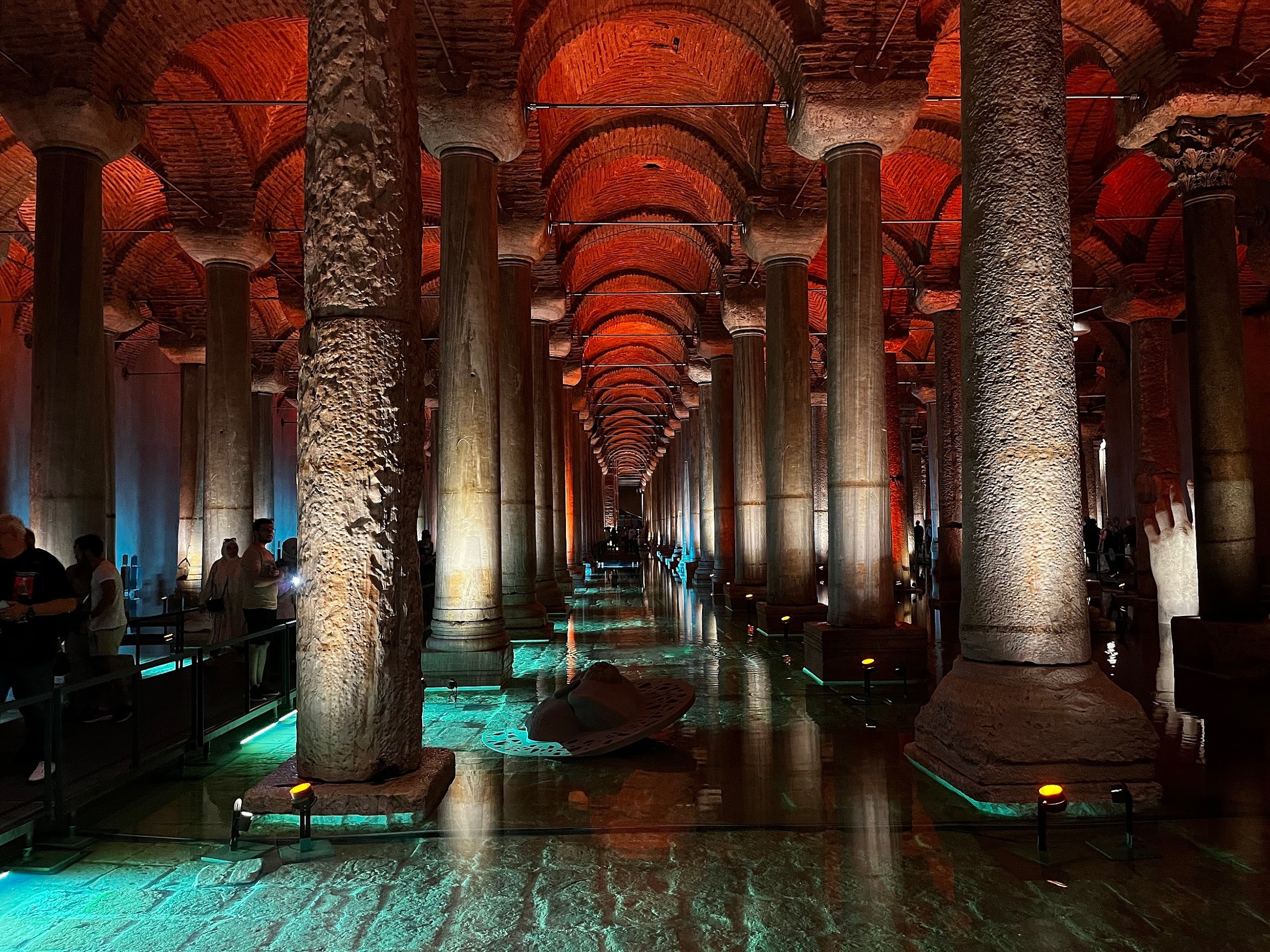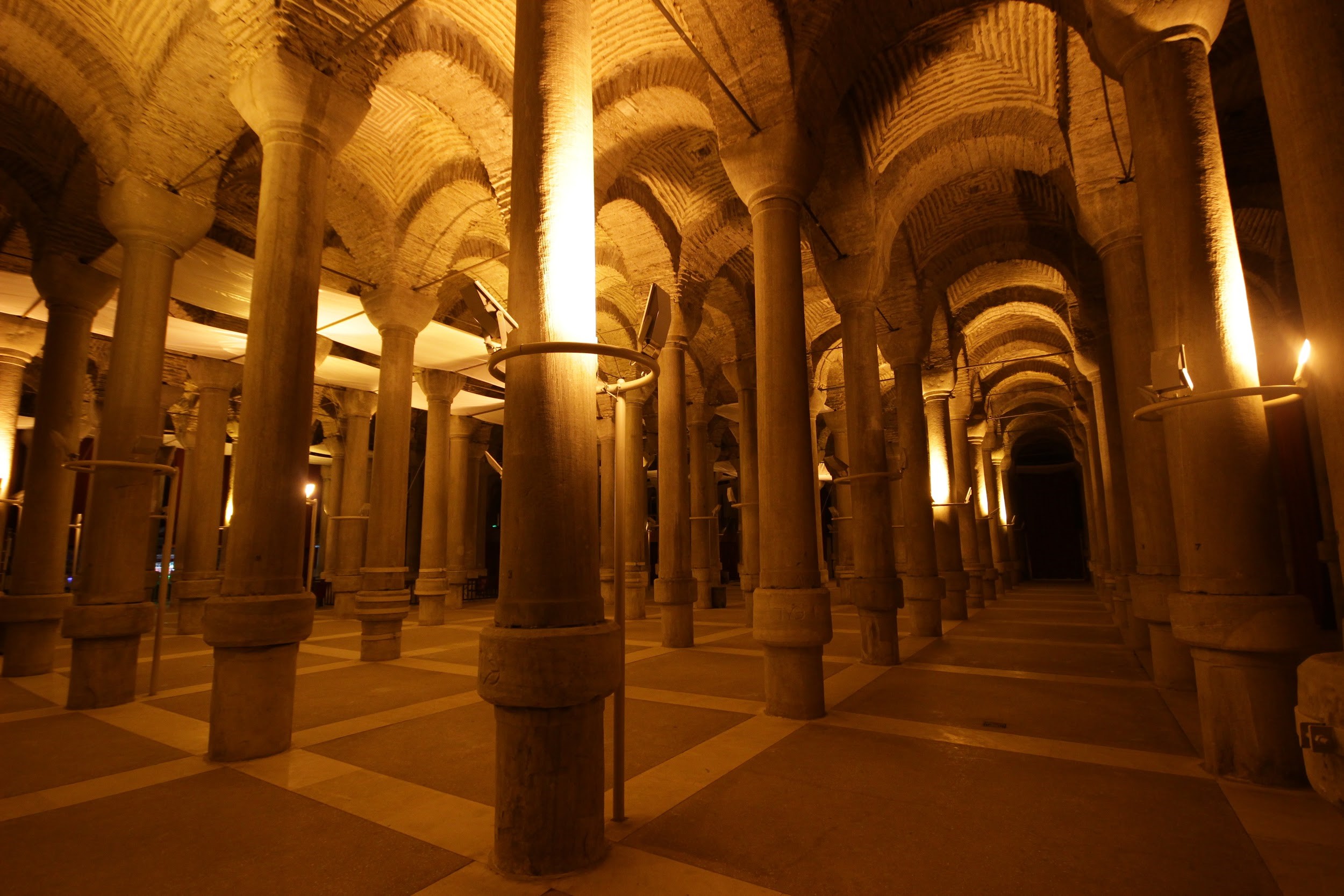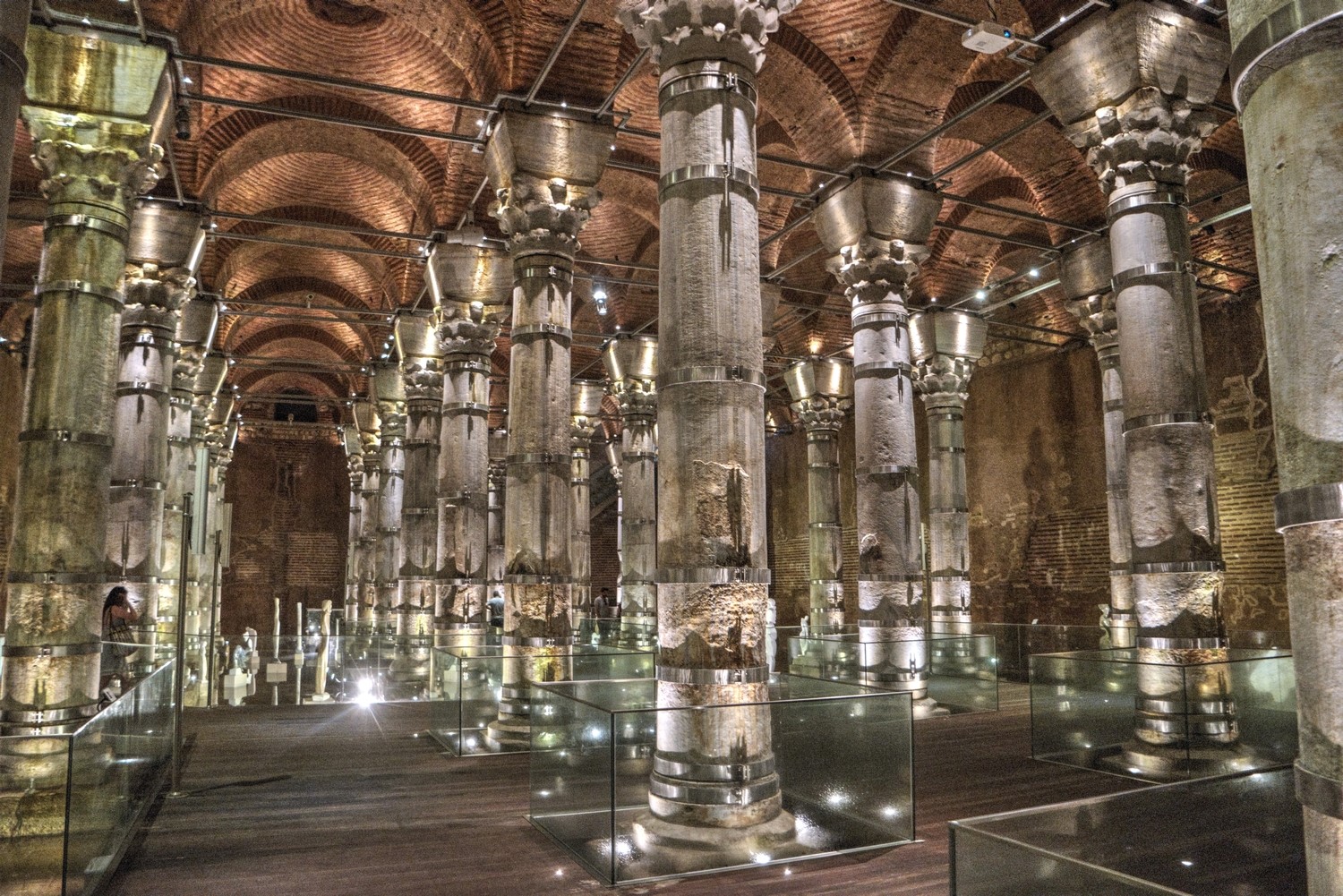
CISTERNS IN ISTANBUL
A cistern is an underground
reservoir to store the rainwater with the purpose of providing freshwater to
the city. Since Istanbul lacks freshwater supplies such as rivers, Byzantians
relied on these cisterns to meet their needs as well as aqueducts. They were
usually built near and under important buildings such as palaces. Ottomans
thought running water is purer compared to still water, therefore, the majority
of the cisterns were put in use as storages during the Ottoman period. Most of
them were protected from human or natural destruction as the entrances of
cisterns were closed and they were beneath the buildings which are also the
reasons why most of them were discovered at a much later time. In this article,
we will look into a few important cisterns which you can visit in the
Sultanahmet Area.
The most famous cistern of Istanbul
is Yerebatan Cistern (the Basilica
Cistern) near to SultanAhmet Square. It takes its English name after the
Basilica structure once located just above the cistern. The cistern was built
by Justinian I during the 6th century. It was designed in rectangle shape with
336 columns and 339 vaults in a about 9,800 square metres area which makes it
the biggest closed cistern built in Constantinople. Just as other structures
built in the reign, most of its construction materials were reused materials
brought from collapsed structures. There are different legendary narrations
related to the head of Medusa located beneath one of the columns in the cistern
and why it was put there. However, it is most likely to be taken from a
destructed temple and simply put in use there to elevate the column. The other
notable reused material is the so-called “peacock-eyed” or “tear-drop” column.

The second
biggest surviving cistern is Binbirdirek
Cistern (Cistern of Philoxenos / “Thousand and One Columns” Cistern) near
the Hippodrome Square. As the Byzantine sources indicate, it was built in the
4th century by senator Philoxenos to supply water to one of the most populated
areas. Of the 224 original columns in the Binbirdirek Cistern, 212 have
survived. Unlike the reused materials of Yerebatan Cistern, the columns were
manufactured for the cistern. The Greek letters engraved in the columns are
known to be signs of stonemasons carved by them. In the 16th century, water
dried out and the cistern was used as an atelier.

Another cistern you can visit in the
vicinity is Serefiye Cistern (Cistern of
Theodosius). It is among the cisterns that can benefit from the
distribution line on the Mese. It is thought to be built in the 5th century by
the look of its construction technique and, therefore, to be built by
Theodosius II which is the reason it is called Cistern of Theodosius.

The next
stop is Gulhane Sarnıcı (Cistern of
Gulhane) within the area of Gulhane Park just down to Hagia Sophia. It is
thought to be built in the 5th century. We do not have information on who
ordered and endowed the construction. Just like other cisterns, it was placed
under a structure which is thought to be either a monastery or a public bath.
This newly renovated cistern also hosts exhibitions for those who are
interested.


Leave a Comment